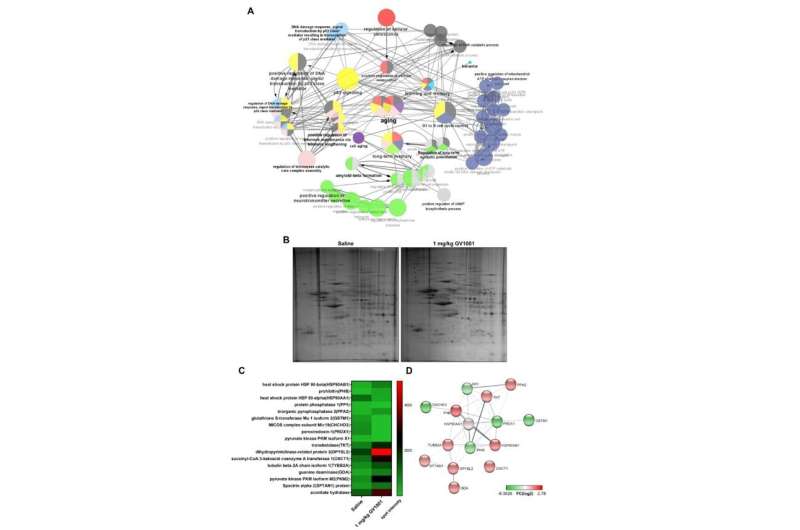This article has been reviewed according to Science X's editorial process and policies. Editors have highlighted the following attributes while ensuring the content's credibility:
fact-checked
proofread
Study: GV1001 reduces neurodegeneration and prolongs lifespan in mouse model of Alzheimer's disease

A new research paper titled "GV1001 reduces neurodegeneration and prolongs lifespan in 3xTg-AD mouse model through anti-aging effects" has been published in Aging.
GV1001, which mimics the activity of human telomerase reverse transcriptase, protects neural cells from amyloid beta (Aβ) toxicity and other stressors through extra-telomeric function, as noted in our prior in vitro studies. As per a recent phase II clinical trial, it improves cognitive function in patients with moderate to severe dementia. However, the underlying protective mechanisms remain unclear.
In this new study, researchers Hyun-Hee Park, Hyuk Sung Kwon, Kyu-Yong Lee, Ye Eun Kim, Jeong-Woo Son, Na-Young Choi, Myung-Hoon Han, Dong Woo Park, Sangjae Kim, and Seong-Ho Koh from Hanyang University Guri Hospital, Hanyang University Graduate School of Biomedical Science and Engineering and Teloid Inc. aimed to investigate the effects of GV1001 on neurodegeneration, senescence, and survival in triple transgenic Alzheimer's disease (AD) (3xTg-AD) mice.
" [...] we hypothesized that GV1001 might have anti-aging effects and improve neurodegeneration and senescence in vivo as a possible mechanism for its beneficial effects on AD," the researchers write.
GV1001 (1 mg/kg) was subcutaneously injected into old 3xTg-AD mice thrice a week until the endpoint for sacrifice, and survival was analyzed. Magnetic resonance imaging (MRI) and Prussian blue staining (PBS) were performed to evaluate entry of GV1001 entrance into the brain.
Diverse molecular studies were performed to investigate the effect of GV1001 on neurodegeneration and cellular senescence in AD model mice, with a particular focus on BACE, amyloid beta1-42 (Aβ1-42), phosphorylated tau, volume of dentate gyrus, β-galactosidase positive cells, telomere length, telomerase activity, and aging-associated proteins.
GV1001 crossed the blood-brain barrier, as confirmed by assessing the status of ferrocenecarboxylic acid-conjugated GV1001 using magnetic resonance imaging and PBS. GV1001 increased the survival of 3xTg-AD mice. It decreased BACE and Aβ1-42 levels, neurodegeneration (i.e., reduced CA1, CA3 and dentate gyrus volume, decreased levels of senescence-associated β-galactosidase positive cells, and increased telomere length and telomerase activity), and levels of aging-associated proteins.
"We suggest that GV1001 exerts anti-aging effects in 3xTg-AD mice by reducing neurodegeneration and senescence, which contributes to improved survival," the researchers write in conclusion.
More information: Hyun-Hee Park et al, GV1001 reduces neurodegeneration and prolongs lifespan in 3xTg-AD mouse model through anti-aging effects, Aging (2024). DOI: 10.18632/aging.205489



















